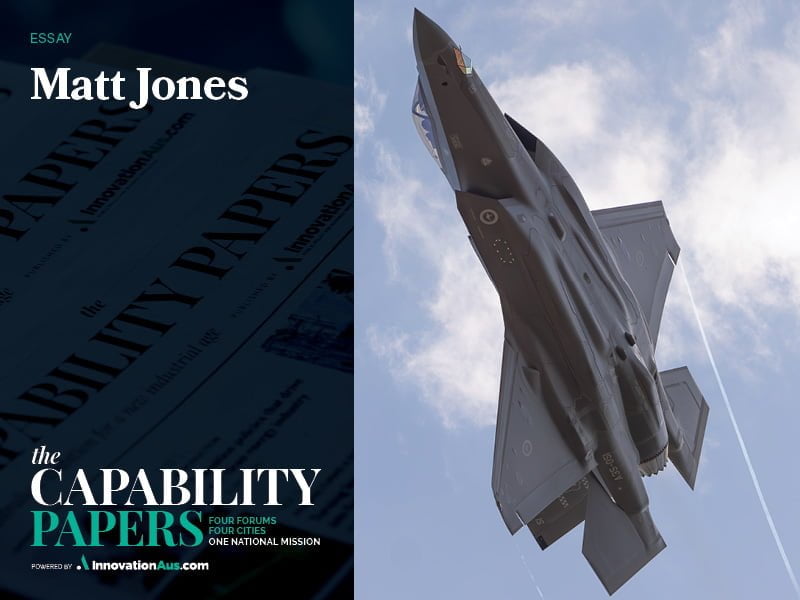In 1977, Star Wars extensively used directed energy weapons either from spaceships or the iconic lightsabre, later referred to as the “laser sword”. Nearly 50 years on, contemporary circumstances are driving the need for directed energy weapons to become the reality.
Directed energy weapons will become a leading defensive and offensive capability from both a military and civil perspective. Threat advancements in swarming unmanned aerial systems, hypersonic weapons and space and counter-space capabilities are driving the need for directed energy weapons to counter these threats.
With the ability to operate at the speed of light, extremely accurately, with scalable intensity and unburdened by traditional ammunition supply chains, directed energy capabilities will be central to future civilian and military pursuits. Directed energy weapons will be essential to maintain a capable and relevant Australian Defence Force (ADF); increasingly necessary for the protection of critical domestic infrastructure, capability and population; and central to ensuring increased access to space, a domain that supports almost all, if not all, industries.
Australia has a burgeoning directed energy weapon industry. But to date the lack of concurrent prioritisation and alignment of effort from government, defence and industry risks Australia being unable to counter emerging threats, risking lives and critical infrastructure.

What are directed energy weapons?
Put most simply, directed energy weapons convert one energy source (e.g. electricity) into another energy source (e.g. laser) and then focus that energy onto an object to disrupt, disable or destroy it.
Why are they needed?
Directed energy weapons offer several advantages over traditional kinetic weapons.
Directed energy weapons have a limitless number of shots, provided power is available. This is colloquially known as the bottomless magazine, which not only allows endless engagements, but also reduces the need for troops and transportation to be exposed to threats during ammunition resupply. Ukraine and Russia have both been plagued at times by ammunition supply challenges, negatively impacting their operations during the Ukraine War. Directed energy weapons reduce such burdens.
Directed energy engagements can be very precise and when used appropriately can reduce collateral damage due to no ammunition shrapnel.
Laser directed energy weapons can engage at longer ranges than other direct fire kinetic weapon systems, as the trajectory is flat and unaffected by wind or gravity. Extended range can also be a disadvantage, which is elaborated on below.
Directed energy weapons offer several speed advantages over kinetic energy weapons. Provided there is a continuous power source, there is no delay between engagements as there is no need for a round to be loaded from a magazine to a chamber through mechanical action. There is also no need to reload a magazine, which is another time burden for kinetic weapons. When fired, the directed energy travels at the speed of light, an increasingly important characteristic against modern and future threats. These cumulative time reductions offer a significant advantage.
Contemporary and future threats increasingly require innovative, modern solutions to counter them. The growing use of swarming unmanned aerial vehicles and the advancements in hypersonic weapons will, in no small part, be countered by the accurate, fast and endless shots only afforded by directed energy weapons.
Dual-use technology
Directed energy weapons will not be limited to military use – they will undoubtedly have civilian applications. Globally, drone attacks are increasing. Attacks on civil infrastructure in Saudi Arabia and the United Arab Emirates in 2022 are just a couple of examples. It is only a matter of time until drone attacks on critical assets are seen in Australia. Critical infrastructure and our population, particularly large-scale public events, will need to be protected against such threats and directed energy weapons will play a central role in safeguarding Australia.
The challenges
Directed energy weapons are not without their challenges and are yet to reach a level of maturity to be operationally employed, safely. Prioritisation in the areas discussed below will be necessary to accelerate the operationalisation of directed energy weapons.
Power. Directed energy weapons must have access to a power. Although advancements are being made in battery storage capacity and size, further improvements must be made to make directed energy weapons practical for extensive operational use. This challenge is further exacerbated by the ADF’s already growing power deficit, due to an increasing number of systems requiring additional electrical power.
Cooling. Due to the poor efficiency of light amplifiers (Laser Amplifiers), typically 60 per cent of electrical power supplied is lost as heat. This waste heat must be disposed of safely and away from the delicate optical mirrors. This means that having a high-power laser that is also classed as LPI, is difficult despite the beam itself being invisible to the naked eye. In the maritime domain, this may not be as much of a challenge due to the abundance of cooling water available as a secondary heat sink.
Collateral damage. Although directed energy weapons offer some reductions in collateral damage, they are not without collateral damage risks. For laser directed energy weapons, the laser continues to travel beyond the target and can travel into space. This therefore necessitates air and space deconfliction and assessments of the incidental threats to own forces and non-combatants. Understanding the technical employment characteristics of directed energy weapons will be necessary to inform the development of collateral damage estimate methodologies to ensure their safe employment.
Legislation. Australia has legislation for the domestic use of lasers, but not in the context of directed energy weapon use. Legislation will need to be developed that allows the use of directed energy weapons domestically, by the appropriate organisations, and by industry for development, test and evaluation. In the context of the ADF, Australia will need to be conscious of its obligations as a signatory to the 1980 Convention on Certain Conventional Weapons and more broadly as a signatory to the conventions underpinning International Humanitarian Law.
What do we need to do?
The announcement of directed energy as a key priority for the Advanced Strategic Capabilities Accelerator (ASCA) is encouraging, so long as ASCA can deliver on its intended objectives. More can, and must, be done.
Sovereign directed energy weapon development needs to be a coordinated, aligned and resourced priority for government, defence and industry to keep pace with emerging threats.
This can be achieved by clearly defining dual-use needs to give industry confidence of an enduring civilian and defence market; establishing a national road map to chart and align efforts to deliver essential capability; accelerating innovation through research and development funding lines, beyond ASCA; safeguarding Australian supply chains through inclusion of directed energy weapons as a Sovereign Industry Capability Priority; and legislating to support the use of directed energy weapons domestically to protect critical infrastructure and population.
Directed energy technology will be increasingly critical to Australia’s security. Advancements are being made, but not fast enough – threat capabilities are advancing more rapidly. Hoping these threat capabilities will not be utilised before directed energy weapons are operationally employable in Australia or by the ADF is not a satisfactory approach. Lives and critical infrastructure will be at risk without directed energy weapons being a key element of Australia’s domestic security architecture and an operational capability of our defence force. A coordinated, aligned, and resourced approach to accelerating Australia’s sovereign directed energy capability is needed now.
The directed energy weapons, popularised in movies such as Star Wars, are no longer science fiction – they are the reality now – but we must operationalise the capability as soon as possible.
Matt Jones is the Executive Vice President of Defence Systems. Previously, he held the positions of CEO, EOS Defence Systems (Australia) and General Manager, Land C4I. Throughout his 35-year career in the defence sector, he has worked in a variety of operational and high-security environments and in senior military leadership roles. His main focus includes using his deep execution experience to lead change. To date at EOS he has initiated the company’s leading role in the C4 EDGE program, a large-scale Australian industry collaboration, and more recently has overseen the product development of EOS’ Directed Energy and next-generation counter UAS solutions.
Do you know more? Contact James Riley via Email.

